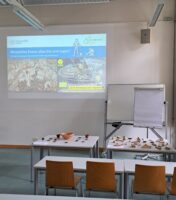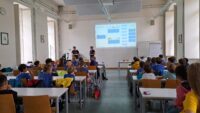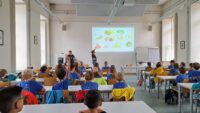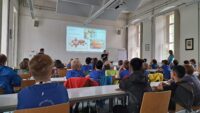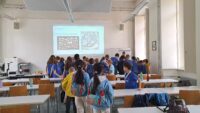Exploring Ancient Foodways – An archaeological journey into Roman dietary habits at Kinderuni Wien 2025
More On Article
- HEAS Publication Covered in PsyPost
- Mining and Dining: Prehistoric Diets in the Salt Mines of Hallstatt
- A new late Neanderthal from Crimea reveals long-distance connections across Eurasia
- Perceptions of female age, health and attractiveness vary with systematic hair manipulations
- Long shared haplotypes identify the southern Urals as a primary source for the 10th-century Hungarians.
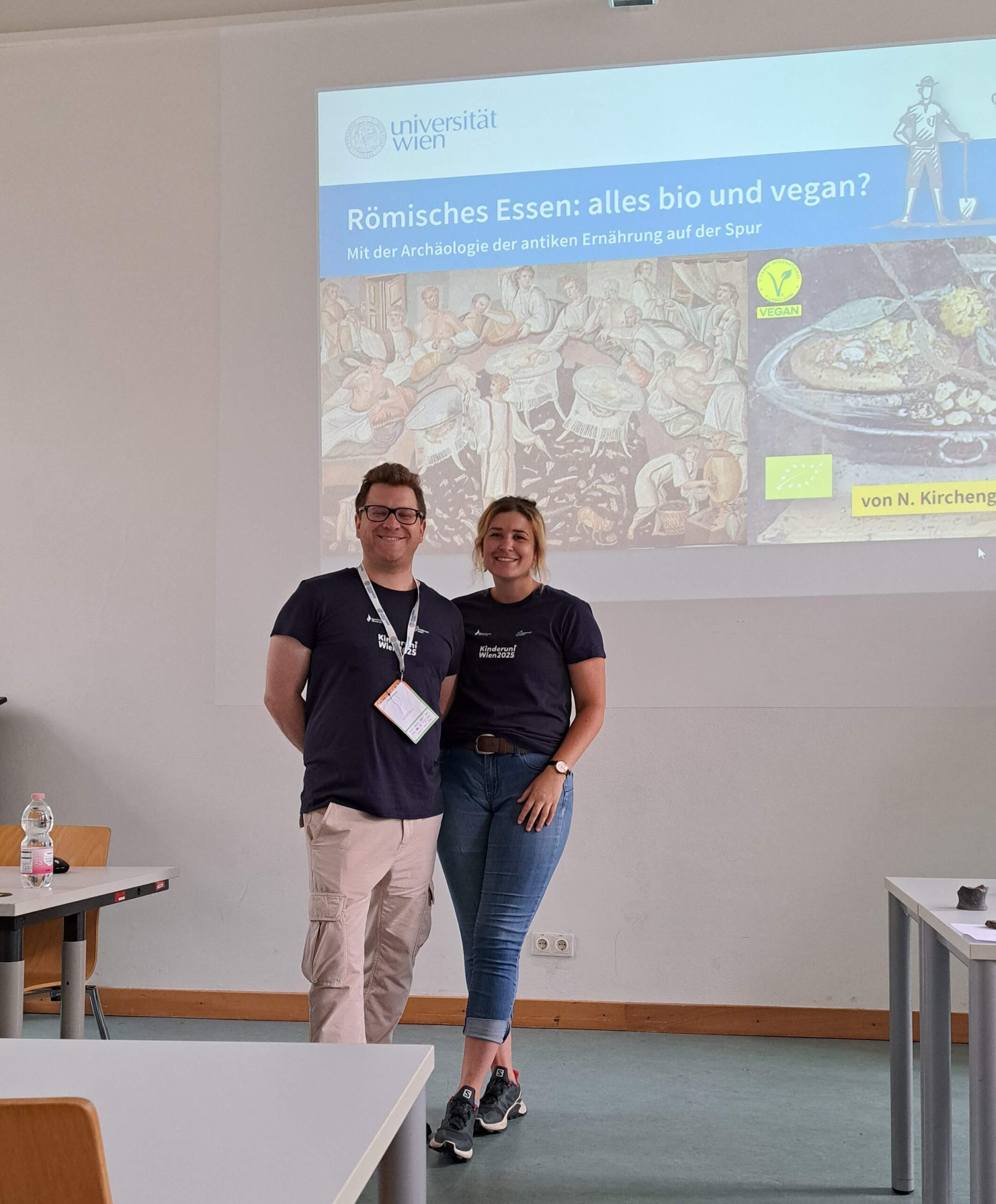
By: Dominik Hagmann and Nisa Kirchengast
On Monday, July 7th, we had the delightful opportunity to dive into the fascinating world of Roman cuisine with a group of 50 young explorers at Kinderuni Wien. The session, titled „Römisches Essen: Alles bio und vegan? Mit der Archäologie der antiken Ernährung auf der Spur“ (Roman Food: All Organic and Vegan? Tracing Ancient Diet with Archaeology), brought together curious minds aged 7 to 12 eager to learn about what the Romans ate and how we uncover their culinary secrets.
We ventured into the depths of Roman gastronomy, not only discussing the food the Romans ate but also uncovering how archaeology helps us reveal their meals, even after nearly two millennia. From archaeological finds to ancient cookbooks, we explored the rich flavors of the past and discussed how these dishes could be recreated today with a modern twist.
Our research areas, especially zooarchaeology and experimental archaeology, were crucial in revealing the diet of the Romans. For instance, through zooarchaeological analysis, we explored animal bones to uncover the types of meat consumed by the Romans, and through experimental archaeology, we demonstrated how ancient food production techniques, like cooking the Roman puls, contributed to the Roman diet.
The children’s enthusiasm was truly inspiring. They asked insightful questions, eager to learn everything from the Romans’ favorite foods to how we reconstruct these ancient meals. In addition to examining archaeological findings, they also had the opportunity to handle real artifacts, such as animal bones and pottery, to understand how these objects provide vital clues about ancient diets. It was exciting to see their reactions when they discovered that many Roman dishes were actually plant-based or vegan, much like today’s healthy diets, and that the Romans valued fresh, seasonal ingredients. Additionally, the children got their first taste of archaeology and learning how these objects help us uncover the past.
Overall, the session was both fun and educational, and it was inspiring to work with such curious and enthusiastic learners. We hope that we sparked a greater appreciation for Roman foodways and perhaps even kindled a passion for archaeology in some of the children. For those wanting to dive deeper into ancient diets, we encourage you to check out our virtual session „Parrots, Fish Sauce, and Dogs“ on kinderuni.online for further exploration.
Further Information:
Kinderuni.online: https://kinderuni.online/kurs/papageien-fischsauce-und-hunde/
Paper: D. Hagmann, Die „puls“ – Experimentalarchäologische Untersuchungen zu einer antiken römischen Getreidebreizubereitung, Mitteilungen der Anthropologischen Gesellschaft in Wien (MAGW), 147(1), 131-154, https://doi.org/10.17613/M6RV6V
Paper: N. I. Kirchengast – G. K. Kunst, Street, backyard, baths: urban bonescapes from the Roman civilian city of Carnuntum (Lower Austria), in: L. Poláček – O. Heinrich-Tamáska – E. Nowotny – S. Eichert (Hrsg.), Über Speisen, Getränke und Macht zwischen Spätantike und Karolingerzeit. Akten der 29. und 30. internationalen Symposien „Grundprobleme der frühgeschichtlichen Entwicklung im mittleren Donauraum“ in Mistelbach, 8.-11. November 2017 und in Brünn, 14.-16. November 2018, Spisy Archeologického Ústavu AV ČR Brno 68 (Grenzach-Wyhlen 2022) 149–163. https://www.researchgate.net/publication/374666381_Street_backyard_baths_-_urban_bonescapes_from_the_Roman_civilian_city_of_Carnuntum_Lower_Austria
